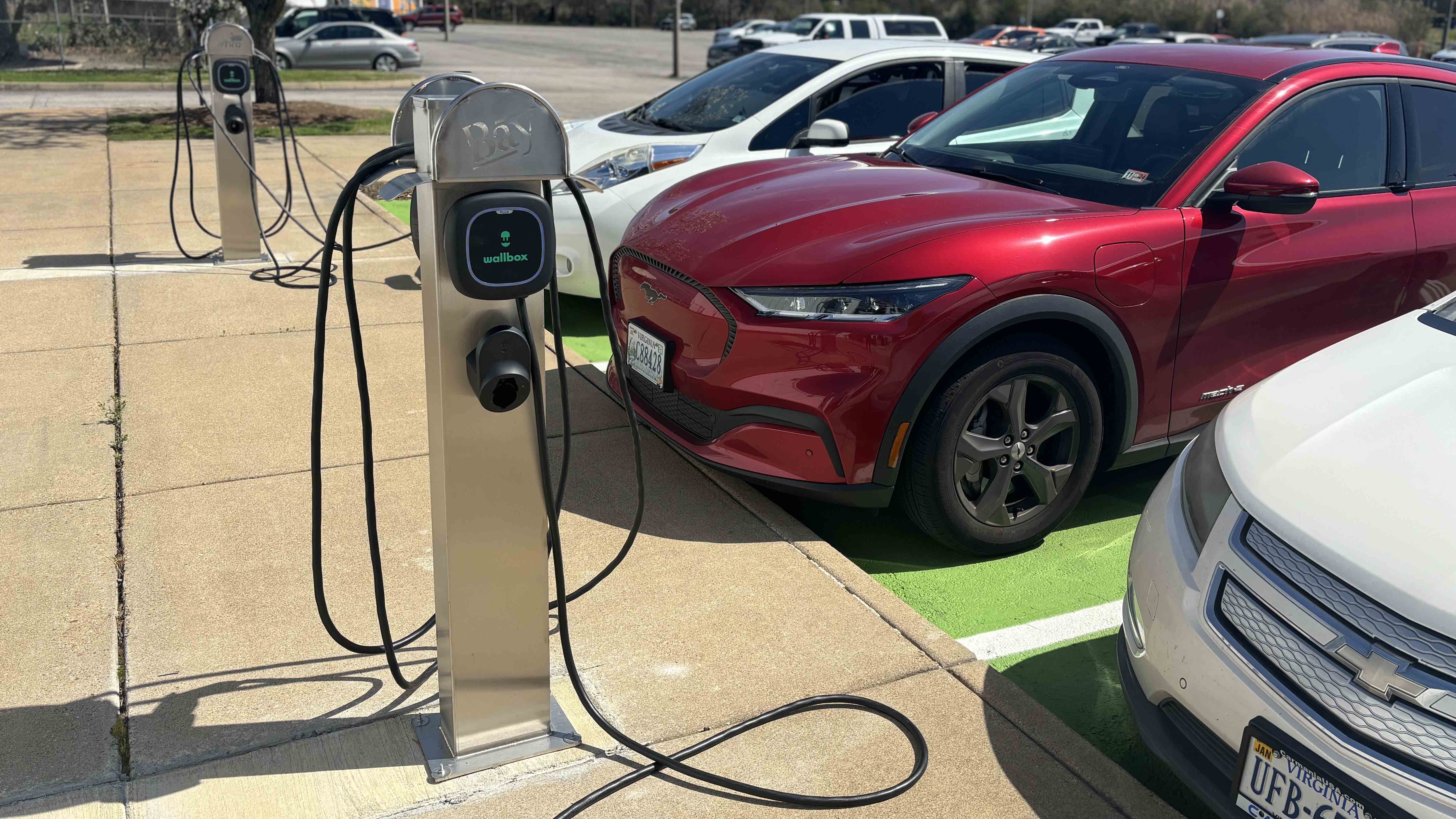
New standards to steer Virginia toward a future with cleaner cars recently took effect, three years after state lawmakers voted to adopt them.
The rules will ensure that a growing number of cars entering the state are electric, hybrid or more energy-efficient.
By 2035, all new cars sold in the Commonwealth must be fully electric. Right now, that number’s a little under 10%, including plug-in hybrids.
The goal is to reduce pollution from cars and trucks that run on fossil fuels. Transportation is currently Virginia’s biggest source of emissions that contribute to climate change.
“This is by far the most important step Virginia has taken to tackle those emissions,” said Trip Pollard, a senior attorney with the Southern Environmental Law Center.
Lawmakers voted to adopt the stricter emissions standards in 2021 under Democratic Gov. Ralph Northam. Republicans have unsuccessfully attempted to repeal the standards in the years since, including at this year’s General Assembly session.
Here’s what to know about the rollout in Virginia.
You’re not required to buy an electric car.
This is one of the biggest sources of misinformation and confusion surrounding the new rules, Pollard said.
The standards only apply to manufacturers – not consumers or car dealers.
Manufacturers delivering new vehicles to Virginia must ensure a growing percentage of them produce zero or lower emissions. (Low-emission vehicles can refer to hybrids, or cars that have higher gas mileage, which cuts down on pollution.)
Virginians will still be able to hold onto their existing gas-powered cars, or buy used ones. But eventually, the market will phase them out.
Electric vehicle ownership, though still rare, is already on the rise in Virginia. By 2022, about 40,000 EVs were registered in the Commonwealth, more than double the number in 2020.
It’s a gradual process, with flexibility built in.
Even a decade will be a challenge to implement fully-electric car sales, with manufacturers racing to meet demand by the 2035 deadline.
But these companies aren’t expected to overhaul operations immediately. Pollard said the standards are designed to gradually drive gas-powered cars out of the market.
“The overarching point of this is to drive down transportation emissions over time, because that percentage of low-emission and zero-emission vehicles increases over time.”
Manufacturers will have certain benchmarks to reach on the road to the final deadline. By 2026, for example, 35% of new cars sold in Virginia should be electric.
But there is flexibility built into that system, including credits that companies can bank, Pollard said. Each manufacturer might produce a different percentage of electric cars depending on their specialty or capacity.
Virginia can’t deviate from California’s standards.
Virginia is the 15th state – and the only one in the South – to adopt these tailpipe emissions standards, which are stricter than what’s set by the federal government.
The stricter standards were created by California because it’s the only state allowed to do so under the Clean Air Act.
That means if other states want standards stricter than the federal ones, they have to adopt California’s.
“One of the big misinformations that's been spread with the repeal bills is this notion that Virginia should set its own standards,” Pollard said. “Well, we can't.”
And because manufacturers are racing to deliver EVs to states that have adopted the standards, it’s harder for consumers to buy them in states that have not, Pollard said.
“The states that are ‘clean car’ states that have adopted these standards were and are getting these cars first,” he said. “So a lot of people in Virginia have had to go to Maryland, for example, to get their EVs.”
EVs are still pricier up front, but cheaper in the long run.
Electric cars are currently more expensive than gas-powered ones, though the gap has started to close.
The average transaction price for EVs as of last summer was $53,469, versus $48,334 for traditional cars, according to Kelley Blue Book.
Over time, EV owners save money because they don’t need to buy gas and require less maintenance, Pollard said.
New federal tax incentives through the Inflation Reduction Act can also sweeten the deal. Individuals and businesses can currently get a tax credit of up to $7,500 for buying an electric car that meets certain standards.

A map shows the current distribution of electric charging stations in the Commonwealth.
More infrastructure is needed.
The transition to electrify many U.S. sectors, including transportation, will require changes to support it.
Like elsewhere, Virginia needs to increase its network of public vehicle charging stations – currently at about 1,400 statewide – and transmission lines that transport electricity.
“With or without Clean Cars, we are moving to more electrification and we need to address charging infrastructure,” Pollard said.
Some of that’s already in motion. The state’s using $14 million from the Volkswagen emission cheating settlement on expanding charging infrastructure, in addition to money from the Bipartisan Infrastructure Law.
The SELC projects that the new standards pushing for more EVs will only add about 4% more electricity demand by 2040 compared to the increase that would otherwise occur from the natural growth of EVs.
Virginia needs to address other rising stresses on electricity demand, such as energy-intensive data centers, Pollard said.
The Department of Environmental Quality, which manages Virginia’s clean car standards, did not respond to WHRO’s request for comment by deadline.

